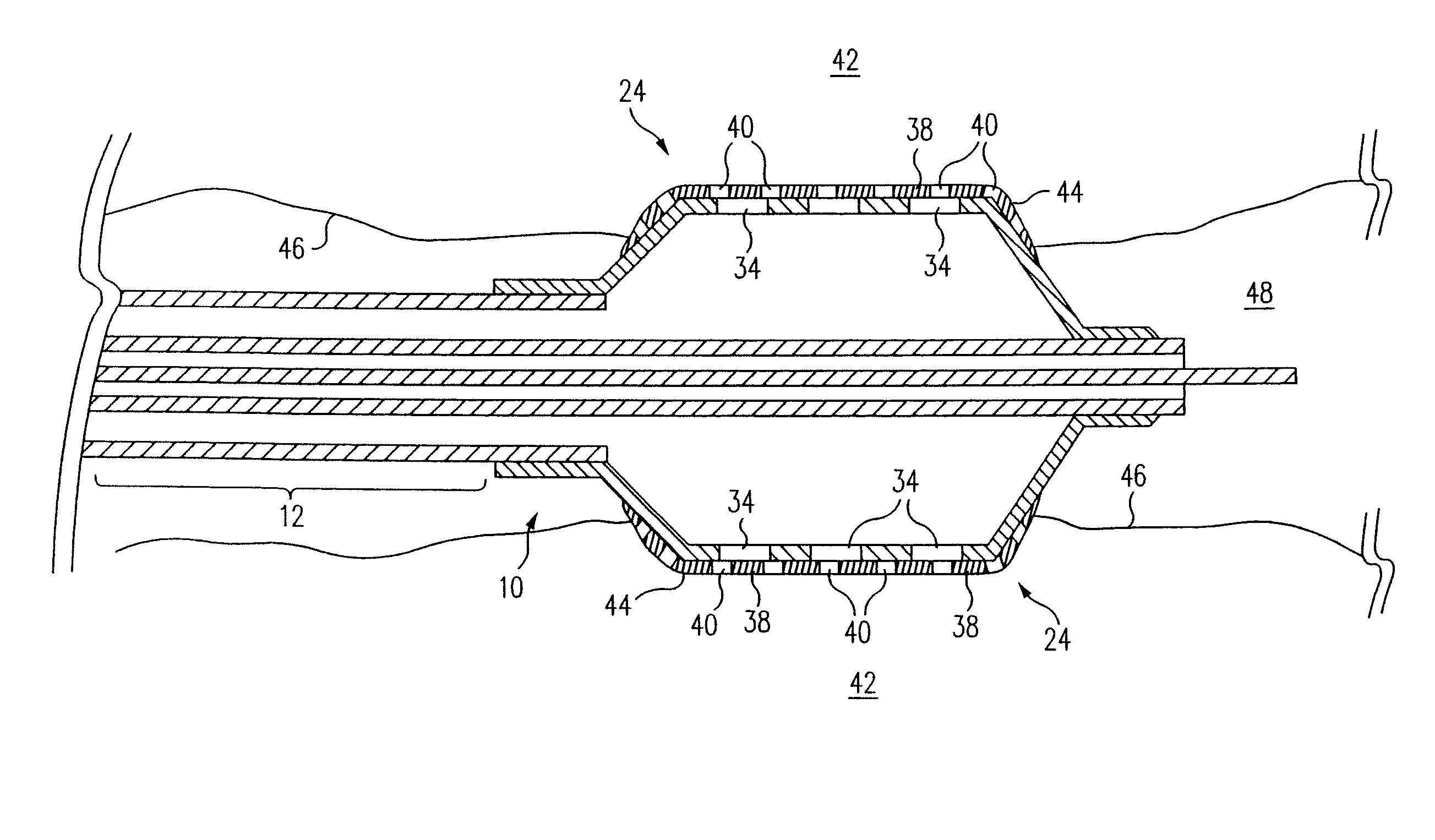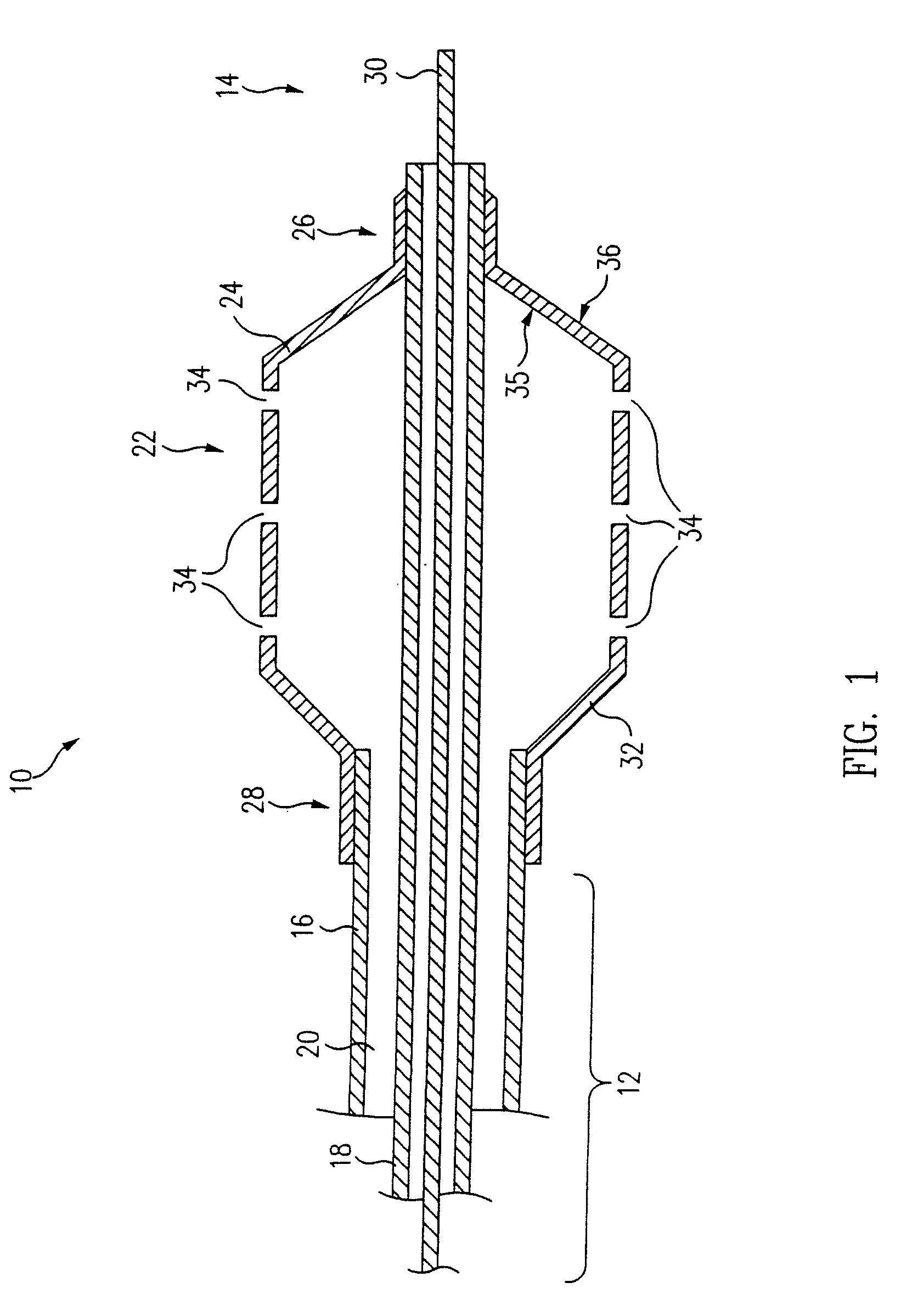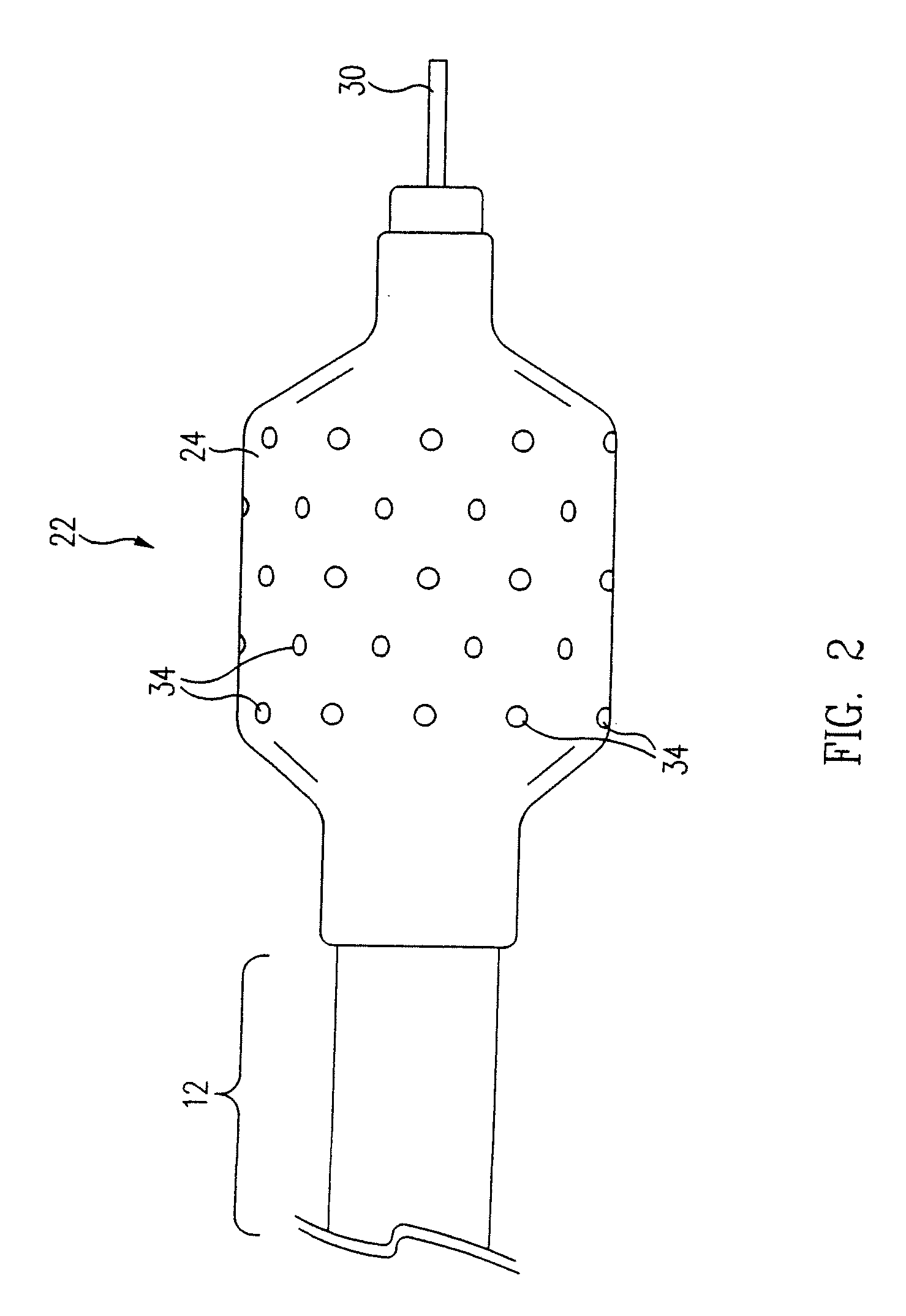Balloon catheter for delivering therapeutic agents
a balloon catheter and therapeutic agent technology, applied in the direction of catheters, packaged goods, packaged foodstuffs, etc., can solve the problems of excessive production of extra cellular matrices (ecm), recurring obstructions, and reoccurring restrictions or blockages, so as to achieve convenient, efficient and cost-effective
- Summary
- Abstract
- Description
- Claims
- Application Information
AI Technical Summary
Benefits of technology
Problems solved by technology
Method used
Image
Examples
example 1
[0046]The inflatable member 24 of a balloon catheter 10 having a plurality of holes 34 formed in the wall 32 of the 30 mm by 20 mm (1.18 inch by 0.79 inch) balloon 24 is suspended from a fixture (not shown) and partially inflated. In one embodiment, approximately 6.9 kPa-13.8 kPa (approximately 1-2 psi) of air flows from the inflation port (not shown), through the annular lumen 20, and into the inflatable balloon 24 causing the balloon 24 to partially inflate. Other fluids, such as nitrogen, at variable pressures, ranging from about 6.9 kPa-13.8 kPa (about 1 psi to 2 psi), can also be used to inflate the balloon 24. In general, the desired fluid pressure flowing through the balloon should be an amount that allows partial inflation of the balloon 24 while maintaining the structural integrity of the microporous coating 38.
[0047]A first solution, i.e. polymer solution, is formulated using 1% w / w Tecoflex® EF-600 (Termedica, Inc.) dissolved in THF / 1.4 Dioxane mixture (2:1). Note that “w...
example 2
[0049]The inflatable member 24 of a balloon catheter 10 having a plurality of holes 34 formed in the wall 32 of a 30 mm by 20 mm (1.18 inch by 0.79 inch) balloon 24 is completely deflated to a flattened configuration, as shown in FIG. 5. A first solution, i.e. polymer solution, is formulated using 1% w / w Tecoflex® EF-600 (Termedica, Inc.) dissolved in THF / 1.4 Dioxane mixture (2:1). The polymer solution and a second solution, or non-solvent such as water, are carefully mixed to avoid precipitation during the mixing process. In one embodiment, the concentration / ratio of polymer solution to non-solvent is approximately 90:10. A coating or layer of the mixture is then applied to the balloon 24 via dipping, spraying or other appropriate application techniques. The total volume of the mixture contained in each layer depends on the desired balloon configuration. In one embodiment, a coating thickness of 0.01 mm (3.94×10−4 inch) is applied to the 30 mm by 20 mm (1.18 inch by 0.79 inch) ball...
PUM
| Property | Measurement | Unit |
|---|---|---|
| size | aaaaa | aaaaa |
| thickness | aaaaa | aaaaa |
| pressure | aaaaa | aaaaa |
Abstract
Description
Claims
Application Information
 Login to View More
Login to View More - R&D
- Intellectual Property
- Life Sciences
- Materials
- Tech Scout
- Unparalleled Data Quality
- Higher Quality Content
- 60% Fewer Hallucinations
Browse by: Latest US Patents, China's latest patents, Technical Efficacy Thesaurus, Application Domain, Technology Topic, Popular Technical Reports.
© 2025 PatSnap. All rights reserved.Legal|Privacy policy|Modern Slavery Act Transparency Statement|Sitemap|About US| Contact US: help@patsnap.com



